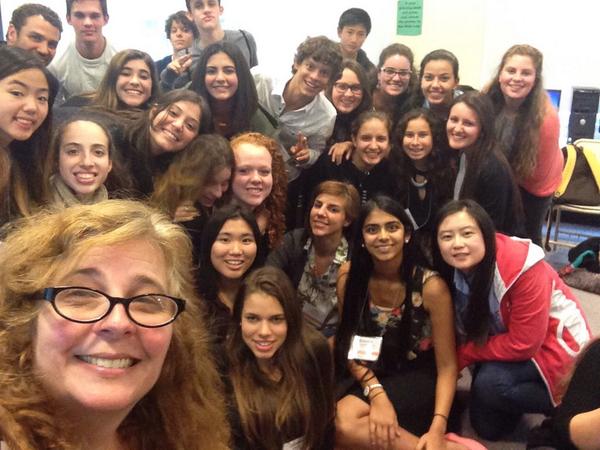Student Voices: Using Social Media to Share Your Passion and Effect Change in the World

The GIN (Global Issues Network) conference brought together an amazing group of young people, all united in their desire to change the world for the better and collaboratively find solutions to the world’s problems.
The Global Issues Network (GIN) empowers young people to collaborate locally, regionally and globally to create solutions for global issues. Each year, thousands of students worldwide engage in GIN-related activities.
I had the opportunity to work directly with students during two breakout sessions about the use of Social Media (Thank you Lisa Goochee for your support and participation) Students had been researching, planning and working together on a solution under a chosen topic listed in the twenty global problems identified by Jean-François Rischard in his book High Noon: Twenty Global Problems, Twenty Years to Solve Them (2002).
They had created video trailers showcasing their projects and prepared presentations to share with their fellow GIN conference attendees from International schools all over Central and South America.
How could these students:
- reach an audience beyond the conference attendees?
- strategically build a network to connect with other students interested in global issues?
- disseminate their challenges, solutions and ideas to receive feedback and gain support?
- make contact with NGOs, experts in their field of interest or potential funding partners?
- continue working with other teams and schools to continue to grow their projects beyond the physical dates of a face to face conference?
The answer: Building a social media network. While there are many different social media platforms that anyone can use to build a network in order to affect social change, the basic idea behind the potential of connecting, collaborating, communicating, crowdsourcing or crowdfunding is similar to all platforms.
- Create a “storefront”, a profile or bio to let others know who you are and what you stand for
- Build a network by strategically choosing people/organizations/companies to follow
- Encourage the “right” people to follow you back
- Contribute quality content
- Participate in conversations (give feedback, ask questions, add perspectives, add value)
- Build a brand (document your work, share , interact, inspire, present, showcase, etc.)
- Grow, weed and maintain your network
I challenged the group of teens in my session to take another look at a Twitter . Most had an account, but we encouraged the ones who did not to create one.
Tech & Learning Newsletter
Tools and ideas to transform education. Sign up below.
- How could they use the account to connect and promote their project?
- How could social media help them build a positive digital footprint and become part of their portfolio?
- How could they build a network of peers and experts?
The rest of the session was hands-on.
- create a Twitter account (if you didn’t have one)
- choose a username
- create a profile description
- Tweet1:INFORM: share something with follow GIN attendees (use the hashtag)
- Tweet2: CONNECT: mention a keynote speaker (give feedback, ask a question, connect….)
- Tweet3:REFLECT: share your aha moment
- harvest usernames of other GIN attendees to add to your network
Here are a few examples of students sharing a tweet with their network.
Who else is teaching social media skills, techniques and strategies for students to start building their own learning/professional network? How are we supporting students to harness the power of social media? How do we encourage students to add their voices about the issues they are passionate about to the conversation? Can you share your strategies as a teacher with the rest of us?
cross posted at langwitches.org/blog
Silvia Tolisano is a Curriculum21 faculty member, author of the book Digital Storytelling Tools for Educators and founder of the Around the World with 80 Schools project. Read more at http://langwitches.org/blog.
